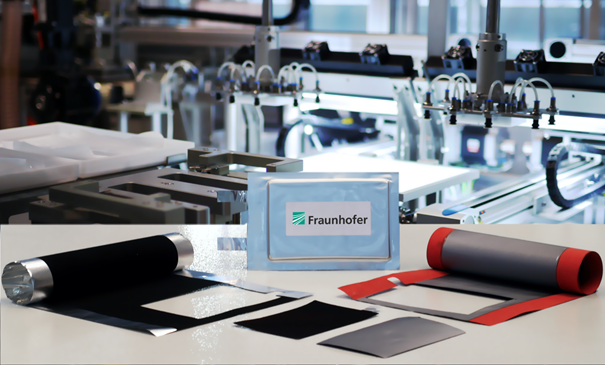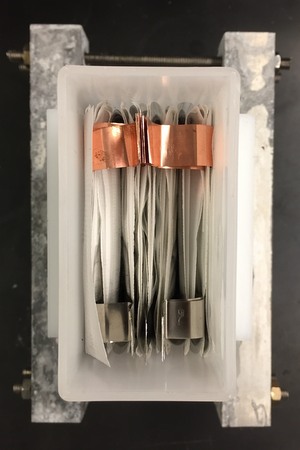By Alix Paultre, contributing editor
The ability to store energy to power an engine or move a load has been around for millennia. Once electrical systems requiring energy storage were introduced, there weren’t many applications that needed long-term energy release, so there wasn’t a great deal of pressure on the battery industry at first. Most applications in electromechanical systems involved using an electric motor as a starter for a larger fueled industrial engine.
Early autonomous technology was unfortunately not a large enough market to demand mainstream solutions, and early robotic systems were more often driven by hydraulics rather than electrics. The primary self-powered autonomous military systems at the time had form factors that could handle the massive battery banks needed, from submarines to the torpedoes in them, for example. It wasn’t until consumer devices proliferated the market that the world changed.
Even consumer devices didn’t really need a lot of battery power at first, as early transistor radios and portable turntables were relatively efficient for the application. In addition, people weren’t concerned about having to turn devices off. That is, until the personal electronics revolution, arguably started by the iPhone, the iPod, and iTunes. Once people got addicted to 24/7 access to the cloud, there was no turning back. On the industrial and vehicle side, energy costs and range anxiety helped push them onto the efficiency and power density bandwagon.
A dangerous mix
Today’s batteries are far more powerful per gram than their ancestors. Now that the energy density is high enough to cause serious damage in a catastrophic failure situation, there is as much attention being paid to containing the electrolyte and making the system safe as there is on its energy output. A battery that cannot operate in a stable manner is useless, and thermal runaway isn’t as cool as it sounds.
Next-generation battery formulations like lithium-sulfur (Li-S) promise energy densities as high as 500 Wh/kg while replacing the currently used cathode material of Li-ion cells with less expensive and non-toxic sulfur. Research under the auspices of the Fraunhofer-Gesellschaft LiScell joint project to develop Li-S battery cells using new cathodes, electrolytes, and anodes also worked on scalable fabrication processes (Fig. 1 ).

Fig. 1: Lithium-sulfur cell electrodes with silicon-alloy anodes. ©Fraunhofer IWS
The research effort also worked on the construction of battery modules and making anodes and cathodes in the form of roll-to-roll foils. Distinguished by its very low material cost and high energy density, Li-S cells can achieve up to 40% higher energy densities than what Li-ion cells can deliver to date.
Unfortunately, the biggest problem of Li-S cells is poor cycling capability. The cells can only handle from 50 to 100 charge/recharge cycles due to a chemical reaction wherein the electrolyte attacks the metallic lithium anode. A new cell design based on a new silicon-alloy anode was implemented in Li-S and Li-ion prototype cells at the Fraunhofer IWS. Researchers discovered that the Li-S cells have a higher tolerance to overcharging and thermal stress.
The next steps involve developing methods for characterizing the aging process of the new cell technology. Suitable economical and efficient fabrication processes are needed as well. The process involves silicon layers with a specialized micro-scale structure deposited on both sides of a thin vacuum-coated copper charge-collector film in a roll-to-roll process. The layers are a suitable anode material for both Li-S and Li-ion cells, with a potential for increasing the volumetric energy density compared to conventional solutions.
On the further-forward-looking side, chemists from the University of Waterloo successfully addressed some the most challenging issues concerning lithium-oxygen (Li-O2 ) batteries, creating a prototype with near 100% coulombic efficiency. The team demonstrated four-electron conversion, which doubles the electron storage of Li-O2 /lithium-air batteries.
The high theoretical energy density and low weight make them ideal for rechargeable systems, but stability issues and other concerns keep it from going mainstream. Serious issues involve chemical reactions degrading the cell from within as well as superoxide consumption of the organic electrolyte. Using a more stable inorganic molten salt and a bifunctional metal-oxide catalyst, the researchers found that by operating the battery at 150°C, more stable Li-O2 is formed, instead of Li2 O2 , creating a highly-reversible Li-O2 battery with coulombic efficiency approaching 100%.

Fig. 2: A manganese-dioxide–zinc battery prototype developed at CCNY. Image: The City College of New York-based CUNY Energy Institute.
The technology uses a layered crystal structure of manganese dioxide intercalated with copper ions to make it rechargeable to its theoretical capacity of 900+ cycles. This advance could replace the relatively unsafe and expensive Li-ion with zinc-anode versions. The biggest hurdle yet to jump is the relatively short cycle life, currently preventing it from being commercialized as a rechargeable battery.
Rechargeable? Refillable?
One of the more interesting new battery technologies going mainstream is one in which the electrolyte flows through the battery and is stored outside of it. The working fluid goes in one direction to charge, then gets pumped back through to recharge. Once prohibitively expensive, new technologies and material approaches have enabled viable reflow batteries.
Major advantages of such technologies include a battery capacity limited only by the size of the storage tank. This high level of scalability makes reflow batteries well-suited for microgrid and grid-level energy-storage applications, as well as regenerative braking in train stations and storing excess harvested energy from wind and solar plants.
One example proving that grid-level applications can be served by reflow batteries is Redflow Ltd.’s Large Scale Battery (LSB) reference platform, which demonstrates a modular and scalable method to deploy the company’s 10-kWh ZBM2 zinc-bromine flow batteries to almost any size desirable. Packaged in a 20-foot shipping container, the reference platform can hold up to 45 ZBM2 batteries and six 12-kW Victron Quattro 48/15,000 battery inverter/chargers (Fig. 3 ).

Fig. 3: Redflow’s Large Scale Battery (LSB) reference platform can handle up to 450 kWh. Image: Redflow.
Taking a related but slightly different tack, redT energy energy-storage systems are based on vanadium redox flow technology as its method to store energy in liquid. Using the flow of a vanadium electrolyte across an ion-exchange membrane creates a reversible electrochemical reaction, such as a battery allowing energy to be stored and released. Similar to advanced Li-O2 conversion, this technology works on vanadium’s ability to exist in four oxidation states, each holding a different electrical charge.
This technology is already being deployed in the field. redT energy is a part of Essentia’s Battery Storage Framework to supply energy storage solutions to the U.K. public sector. The company will also deliver over a thousand of its Gen-3 tank units for two 40-MWh grid-scale projects, with plans to create 690 MWh of Automated Frequency Response Reserve projects for the grids of Austria and Germany.
Looking forward
These and other advances like them are also being complimented by new hardware and software advances, leveraging the benefits of these new approaches. New components based on wide-bandgap semiconductors, cloud-enabled power-management microcontrollers, and new power electronic topologies are also increasing battery capabilities by increasing the efficiency and intelligence of the loads that they are connected to.
The technology in the battery driving an electronic system is as important as any other aspect of the product that it serves, and the next generation of batteries is currently promising to address almost all of our power storage issues. Until we invent the perfect battery, though, engineers will continue to have to balance size, performance, reliability, safety, and cost.
Advertisement
Learn more about Electronic Products Magazine





